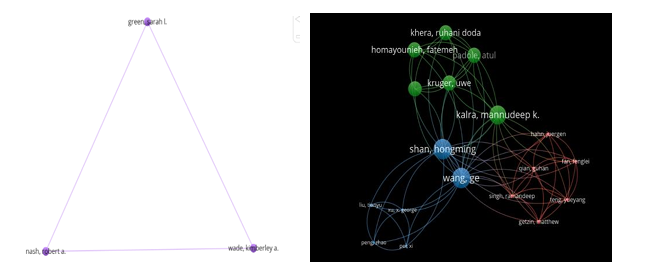TripleMAsk Spatial Linear Filter and Neutrosophic Entropy for Video Denoising, Face Detection and Recognition in Forensic Crime Analysis Using Deep Learning
Keywords:
Forensic; video-preprocessing; neutrosophic-sets; face-detection; face-recognition, deep learning.Abstract
Forensic Science is the application of Scientific methods to resolve crime and legal issues.
It involves various disciplines, such as Computer Science, Biology, Chemistry and Anthropology.
Forensic scientists examine and analyze evidence from crime scenes, such as fingerprints, DNA,
blood, or weapons. Digital proof is one of the forms of forensic evidence. It provide real time eye
witness of the incident. Video recordings enable investigators to find out what exactly has transpired.
Investigators use video evidence as a source for witness statements, and it aids in the search for the
missing person or suspect. Video evidence is also used to testify in court and help with investigations
and prosecutions. Failure of forensic science results in wrong judgement convicting innocent people
and escaping criminals [1]. For most crimes high quality video recordings are often not available.
video quality issues such as blurry, speckled, pixelated and low-resolution videos captured at low
light are a real challenge in forensic analysis. To address such issues in this research a hybrid model
using set of filters including triplemask spatial linear filter, median filter and bilateral filters are used.
For denoising images, a novel image filter using sliding window convolution is proposed. For image
sharpening a triplemask spatial linear filter is proposed. Triplemask spatial linear filter is created by
cascading a series of filters. Identity, shift and fraction-based approach is used in mask processing.
For image smoothing and to preserve the edges bilateral filter is used [2]. The performance of
convolution operation is compared with distinct convolution, shift rotational convolution and scipy
convolution. To handle uncertainty, imprecision, and ambiguity in real-world image data in a precise
manner neutrosophic science is used in image analysis. By the generated neutrosophic set of the given
input image ambiguous regions in the image are detected. Feature selection is made by calculating
the entropy of different image regions. From the generated neutrosophic set entropy the degree of
uncertainty, within the input image is quantified. The intensity distributions are measured using
entropy values. In feature selection regions with highest and lowest entropy values containing face
images are selected, visualized and processed to further aid in forensic analysis in detecting the
culprits. Neutrosophic AHP is used for prioritizing criteria based on face detection and
indeterminancy. Face detection is performed using single shot detector framework with a resnet base network, trained using caffe deep learning framework. face recognition process is performed using
dlibs [9] state-of-the-art face recognition model built with deep learning [10]. Face recognition in this
research distance-based similarity measure using neutrosophic sets is performed. These measures are
used in conjunction with facenet[59] face recognition algorithm to improve the robustness and
accuracy over traditional methods. The model has an accuracy of 99.38% on the labelled faces in the
wild benchmark.
Downloads

Downloads
Published
Issue
Section
License
Copyright (c) 2024 Neutrosophic Sets and Systems

This work is licensed under a Creative Commons Attribution 4.0 International License.







